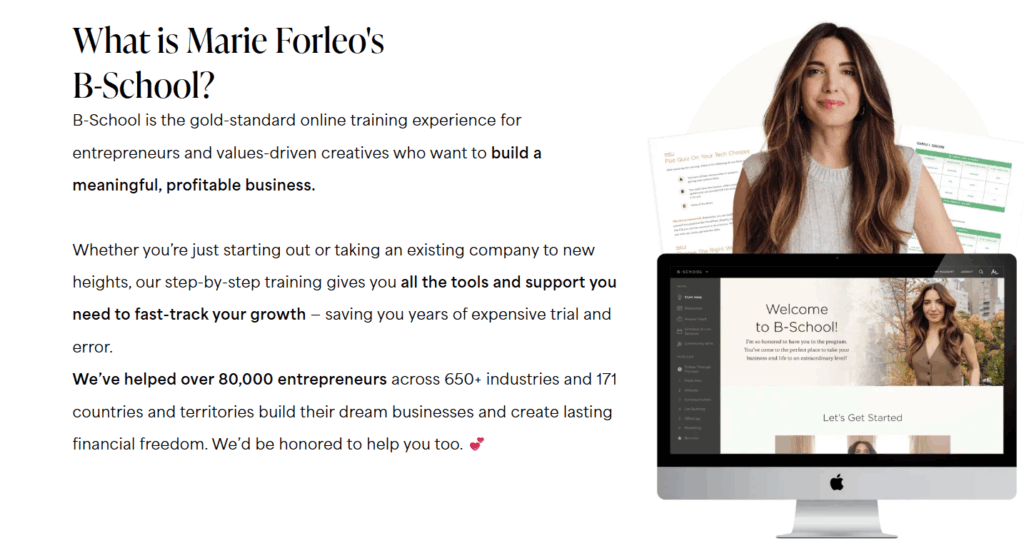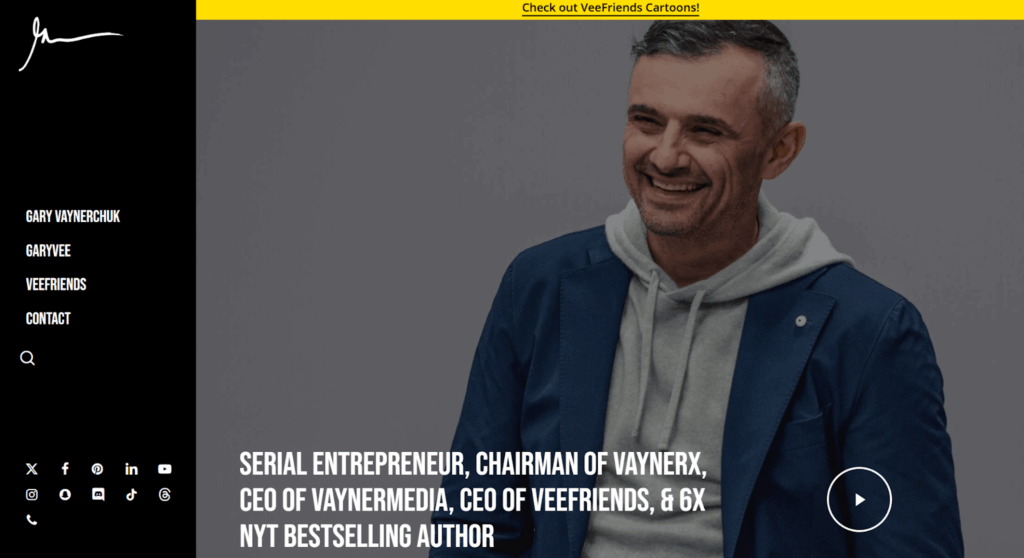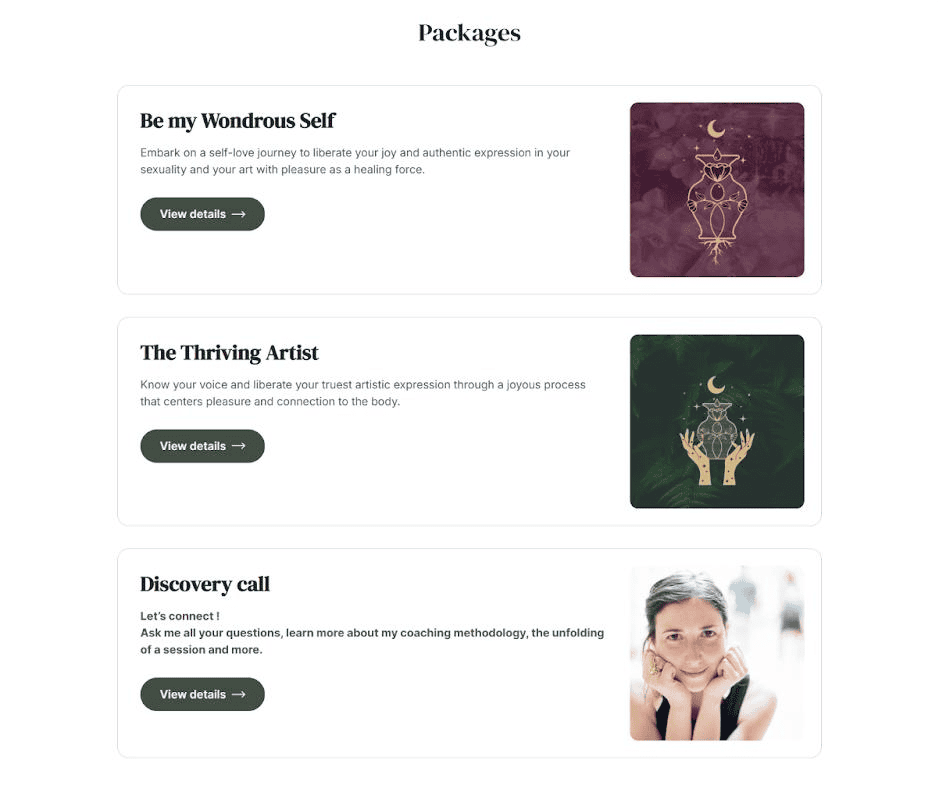If you’re a coach reading this, I’ve got some good news and some challenging news.
The good news? The coaching industry is absolutely booming.
The challenging news? Everyone else knows this, too.
This means standing out as a coach isn’t just nice to have anymore. It’s essential for survival.
But here’s what most articles about differentiation won’t tell you:
The old ways of standing out aren’t working anymore. Your clients have evolved, and so must your approach.
In this guide, I’ll show you exactly how to stand out as a coach in 2025 using strategies that actually work in today’s sophisticated market.
Why Standing Out Matters More Than Ever for Coaches in 2025
So how much has the coaching industry grown in the first place?
Well, we’re talking about a market valued at USD 3.4 billion in 2024 that’s projected to reach USD 8.4 billion by 2034. That’s a compound annual growth rate of 9.5%!
But keep this in mind:
There are now an estimated 109,200 coach practitioners worldwide. That number grew by 54% between 2019 and 2022 alone.
And if you’re a business coach, things are even more competitive.
From 2019 to 2024, the revenue for business coaching is actually down 0.3% per year, while the number of business coaching businesses went up 5.4% per year.

But that’s not the only thing that’s happening.
Your potential clients aren’t the same as they were even two years ago. They have:
- Seen hundreds of coaching ads
- Attended dozens of free webinars
- Downloaded more lead magnets than they can count
This is what we call market sophistication, and understanding where your market sits is crucial for standing out.
Here’s how market sophistication works:
- Stage 1: First-to-Market – Your service is brand new, and prospects have never heard of anything like it.
- Stage 2: Second-to-Market – Competitors have entered, but the service is still relatively new to most prospects.
- Stage 3: Saturated Market – The market is crowded, prospects have heard it all, and simple claims no longer work.
- Stage 4: Crowded Market – Your competitors are copying each other’s unique mechanisms, making it harder to stand out.
- Stage 5: Market Saturation and Revival – Prospects no longer believe in basic coaching claims, or the market has become highly commoditized.
In my personal experience as a marketing coach and consultant, most coaching niches are sitting somewhere between stages 3 and 5. Your potential clients have heard every promise, seen every transformation story, and know all the typical coaching lingo.
This means you need what’s called a “unique mechanism” to stand out, and it needs to be a good one.
A unique mechanism is your specific process for getting client results, and it needs to be woven into everything you do.
The Real Cost of Blending In
When you look and sound like every other coach in your niche, three things happen:
- You compete on price (and usually lose)
- You struggle to attract your ideal clients
- You work harder for every single sale
But when you successfully differentiate yourself?
You can charge premium prices, attract clients who are excited to work specifically with you, and build a waitlist instead of chasing leads.
Identify Your Unique Coaching DNA
Before you can stand out, you need to know what makes you different. And I’m not talking about surface-level stuff like, “I really care about my clients” (every coach says that).
I’m talking about your Unique Coaching DNA, the combination of factors that nobody else can replicate.
Your Story + Your System = Your Superpower
Take Amy Porterfield, for example. She doesn’t just teach online courses. She combines her corporate marketing background with her specific “Digital Course Academy” framework.
Her personal story of leaving Tony Robbins’ company to build her own empire is woven into everything she does.

That’s not something another coach can copy, even if they teach the exact same topic.
Mining Your Unique Advantages
Ask yourself these questions:
- What unusual combination of experiences do you bring?
- What process do you use that you’ve never seen another coach teach?
- What beliefs do you hold that go against conventional coaching wisdom?
- What results can you create because of your specific background?
The answers to these questions form your differentiation foundation.
Create a Distinctive Client Experience That Gets People Talking
‘Standing out’ doesn’t mean ‘scream louder than everyone else’ or ‘spend more time/money marketing’.
It means you create an experience so memorable that your clients can’t help but talk about it.
1. Design Your Signature Client Journey.
Marie Forleo doesn’t just run a business coaching program. She’s created an entire universe with B-School that includes custom notebooks, a specific onboarding sequence, and even her own language (hello, “B-Schoolers”!).

Every touchpoint reinforces that this isn’t just another coaching program. It’s a movement.
When you’re developing your signature coaching program, think of how to personalize the journey in a way that makes sense with what you do.
2. Use Technology to Enhance Human Connection.
One of the most innovative tools I’ve seen coaches use lately is Coachvox AI. This platform lets coaches create an AI version of themselves that can answer questions, provide guidance, and maintain their unique coaching style 24/7.
But the best way to use this tool isn’t necessarily to replace yourself as a coach. Instead, you can use it to extend reach and provide support between sessions.
That’s how you use technology strategically in 2025.
3. Create Rituals Your Clients Will Remember.
What if every coaching session started with a unique ritual only you do? What if your onboarding process included something unexpected and delightful?
These small touches compound into a coaching experience that feels entirely different from working with anyone else.
Develop Content That Showcases Your Unique Perspective And Builds A Personal Brand
When a client has to choose between a handful of coaches who all have:
- Coaching programs in the very specific niche where they need help
- Certifications and credentials abound
- Tons of testimonials and case studies
How do they choose who to work with?
The reality is that they’ll typically pick the person they’ve come to love the most. And one of the best ways to get potential clients to love you (before they work with you) is by building a personal coaching brand.
You can do that by creating the right type of content.
Find Your Voice By Taking A Stand
If you try to appeal to everyone, you’ll appeal to no one.
The coaches who stand out are the ones who aren’t afraid to be polarizing. They know what they stand FOR and what they stand AGAINST.
Look at Gary Vaynerchuk. Love him or hate him, you definitely have an opinion about his opinions, right?

He’s not trying to be everyone’s cup of tea, and that’s exactly why his content cuts through the noise.
Start to brainstorm:
- What you value
- What you stand for and against
- How your values tie into your approach to coaching
Then, when it’s time to create content, you can weave the above into your stories to start attracting your ideal audience.
Content Formats That Actually Work in 2025
Traditional digital marketing still works in 2025, including formats such as:
- Blog posts and SEO marketing (although you’ll need to keep up to date with how this is changing with AI)
- Email marketing (especially if your newsletter uses the above strategies to share your unique voice)
- Social media (especially video content and long-form carousels)
But I’ve seen the following formats help coaches stand out even more over the past year.
Live Multi-Day Challenges
Think of a single problem that your ideal audience will struggle with.
For example, if you’re an ADHD coach for women who want to thrive in both their personal lives and careers, maybe that single problem is not knowing how to advocate for themselves in the workplace.
Over the course of your multi-day challenge, which you can run live on Zoom or similar platforms, make it your goal to solve that problem for your clients.
I’ve even seen industry giants like Brendon Burchard run 5-day challenges:

The more effectively you solve a problem for your attendees, the more likely they’ll want to work with you further to solve the deeper problems they face.
Where I’ve seen coaches go wrong with live challenges is to try to solve every single problem their audience has. Not only is this super overwhelming for you, but it will be much more difficult for you to provide your clients with a quick, small win that proves you can actually help them.
And that’s the whole point of live challenges.
Video Content With Your Actual Face
Yes, it’s scarier than writing posts. That’s exactly why it works.
When Mel Robbins shows up on video, you see her expressions, hear her voice inflections, and connect with her as a human. That’s impossible to replicate through text alone.
Share Your Method Without Giving Away The Farm
The fear of sharing too much keeps many coaches playing small. But you can share your entire methodology and people will still pay you to guide them through it.
Use your content to share the “what”, and use your coaching program to share:
- The “how”
- Implementation support
- Accountability
- Personalized guidance
The above is something only you can provide.
Leverage Technology Strategically (Without Losing Your Humanity)
Technology should amplify your uniqueness, not replace it. Here’s how to go about it.
- Build Your 2025 Tech Stack.
The coaches who stand out are using technology to create better client experiences, not just save time.
Here’s what forward-thinking coaches are using:
- For Client Management: Platforms like Paperbell that handle everything from easy website creation to scheduling and contracts in one place, creating a seamless professional experience.
- For Extended Support: AI tools that can answer common questions in your voice and style, like Coachvox.
- For Community Building: Private platforms where clients connect between sessions (like Facebook groups or Skool).
- For Content Creation: Tools that help you repurpose one piece of content across multiple platforms, like Repurpose.io.
The Human Touch Multiplier: An Example
Ali Abdaal uses technology brilliantly. He leverages tools to systematize his content creation, but every piece still feels genuinely like him.
And there are a lot of pieces, including but not limited to:
- Articles
- Book notes
- Weekly newsletters
- Videos
- Podcasts
He’s not hiding behind automation. He’s using it to show up more consistently as himself.

How To Use Paperbell To Look Professional and Save Time
You can be the best coach in the world, but if your business looks amateur, potential clients will click away.
But you don’t need to be a tech wizard or hire a designer to look professional anymore. Paperbell lets you launch a stunning coaching website complete with your coaching packages and brand colors in just minutes.

(Image Source: Coach Sarah Novaro’s Paperbell Website)
But it goes beyond just looking good. You can add testimonials and FAQs to your main page, showcasing everything that makes your coaching packages unique.
The best part? While other coaches are juggling five different tools and spending hours on admin work, you’re actually coaching. Because everything from scheduling to payments to contracts happens automatically in one place.
Click here to try it free and see how professional your coaching business can look in under 10 minutes.
Nurture a Community, Not Just a Client List
Apart from having a personal brand, building your own community is another great way to stand out.
You don’t need to be online 24/7 to build community. Here’s what works:
- Monthly virtual meetups where clients can connect
- Peer coaching partnerships you facilitate
- Shared challenges that bond your clients
- Celebration rituals that make wins communal
Make working with you feel like joining an exclusive club, not just hiring a service provider.

Measure and Share Your Coaching Impact
In a world where everyone claims to be a coach, proof will help you differentiate yourself.
For instance, Ramit Sethi doesn’t just share testimonials. He chooses the ones that share specific takeaways and show growth.

You don’t need to be Ramit Sethi to do the same thing. Start by tracking metrics that matter, such as:
- Client results over time
- Specific transformations achieved
- ROI for business coaching clients
- Life improvements for personal coaching clients
Then, share these regularly in your content. Remember to ask for permission!
FAQ About Standing Out as a Coach
How do I stand out without being gimmicky or inauthentic?
Focus on amplifying what’s already unique about you rather than creating a false persona. Your authentic quirks and perspectives are your biggest assets when shared consistently.
Should I niche down further to stand out in 2025?
Yes, but niche by transformation and approach, not just demographics. “Life coach for women” is too broad. “Recovery coach using somatic practices for high-achieving women” stands out.
What’s the most important factor in standing out as a coach?
Consistency in your unique approach across all touchpoints. From your content to your coaching style to your client experience, everything should feel cohesively you.
How can I differentiate myself if I’m just starting my coaching business?
Start with your story and perspective. You don’t need years of experience to have a unique viewpoint. Document your journey and share your fresh perspective as an advantage.
Stand Out In 2025 And Become An Unstoppable Coach
You don’t have to be louder or flashier than everyone else to stand out as a coach in 2025. But you do have to be more YOU than you’ve ever dared to be before.
The coaches who will thrive are the ones who embrace their unique coaching DNA, create unforgettable client experiences, and use technology to amplify rather than replace their human connection.
Your next step? Pick one strategy from this guide and implement it this week.
Ready to create a professional coaching presence that stands out from day one? Try Paperbell free and see how the right tools can help you deliver an exceptional coaching experience that gets people talking.










